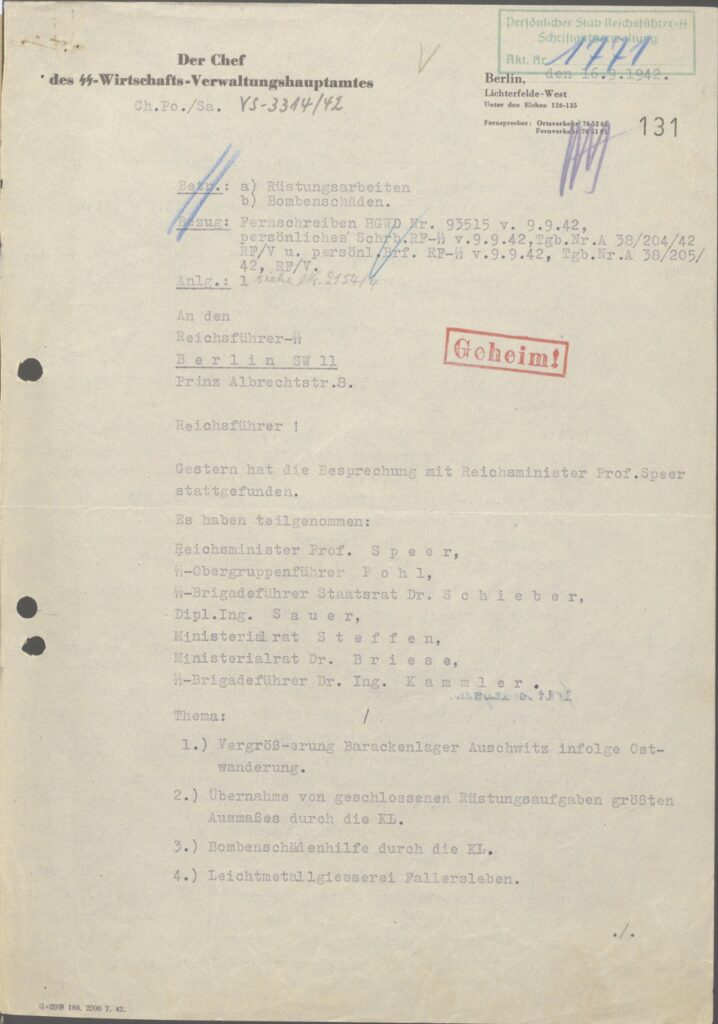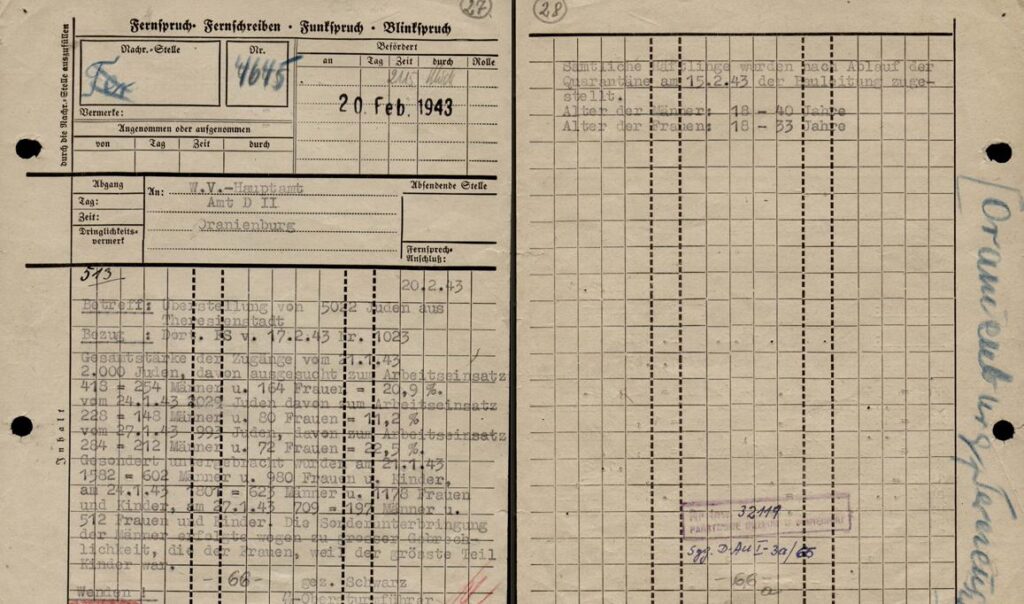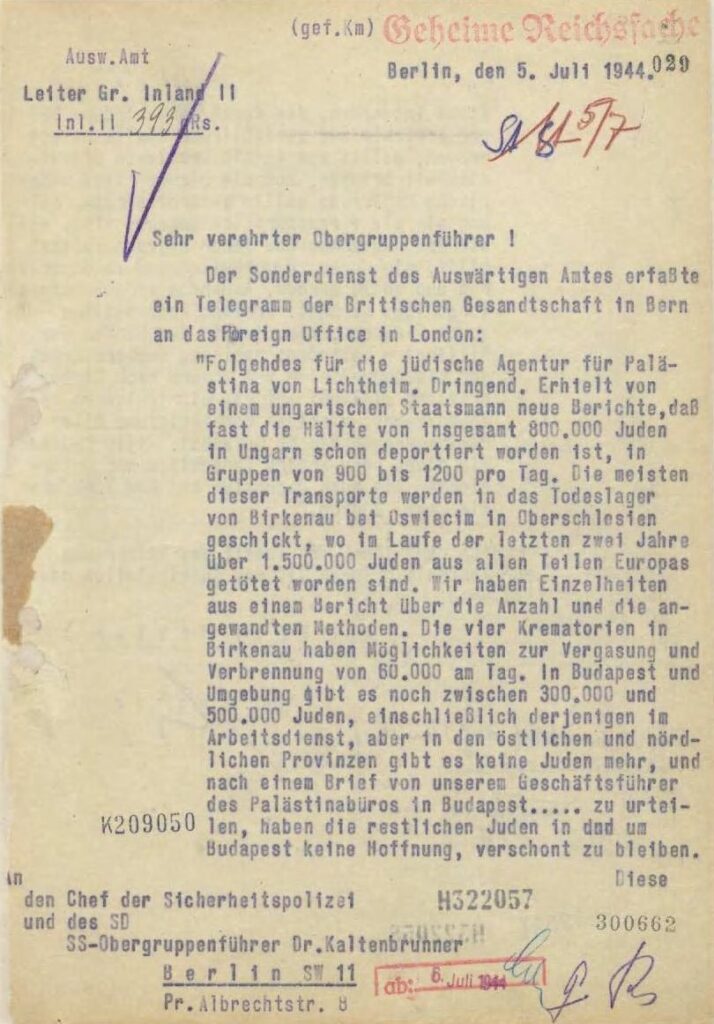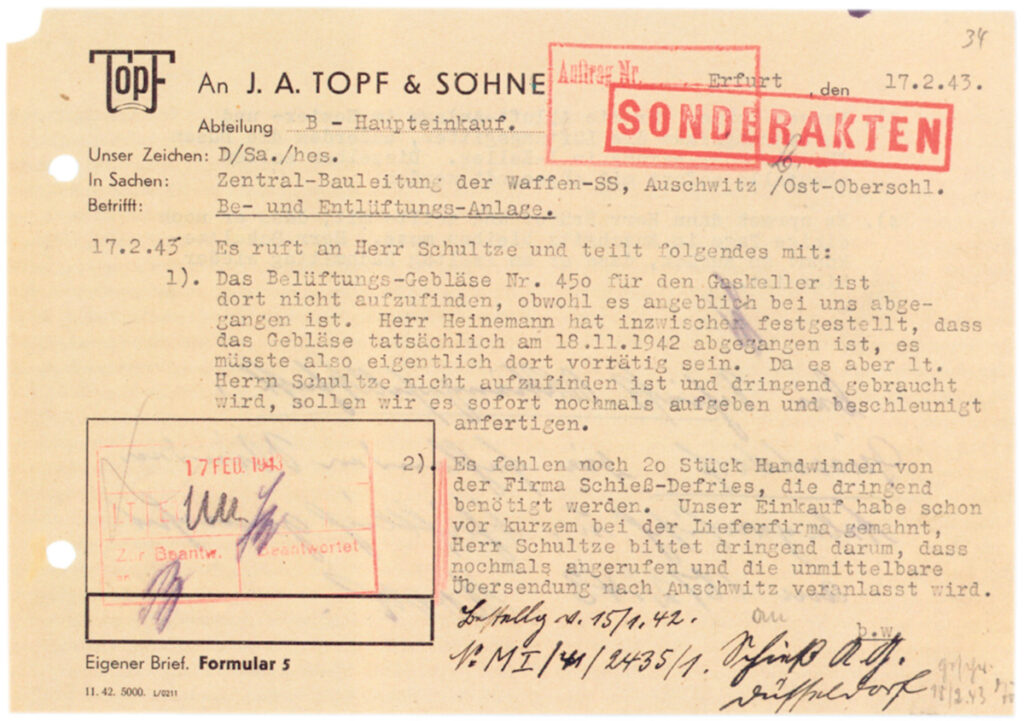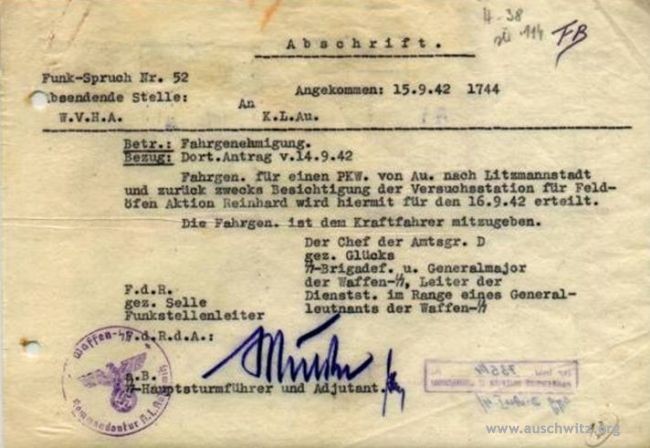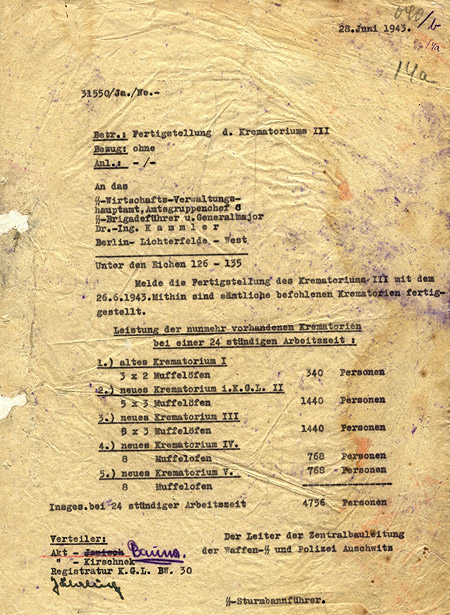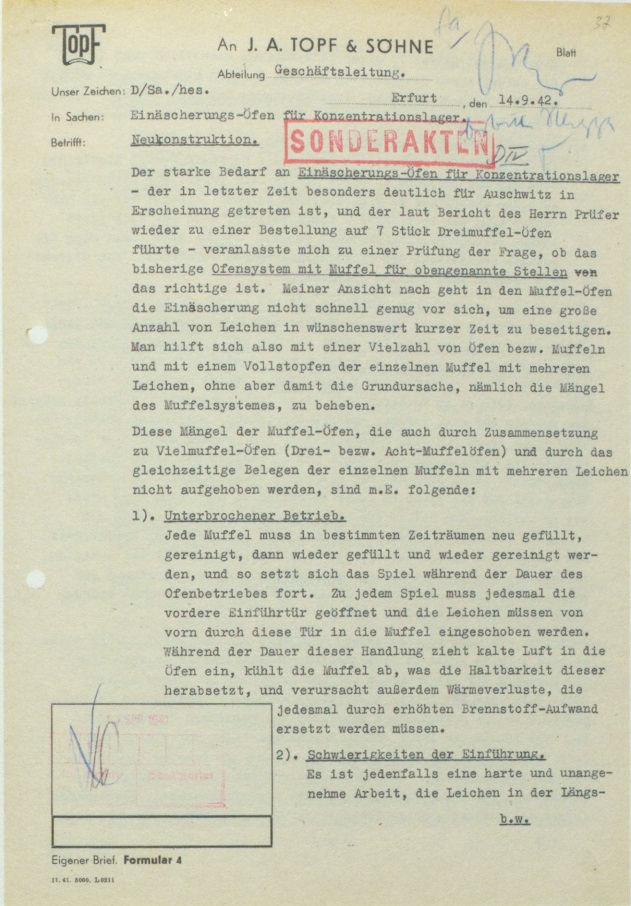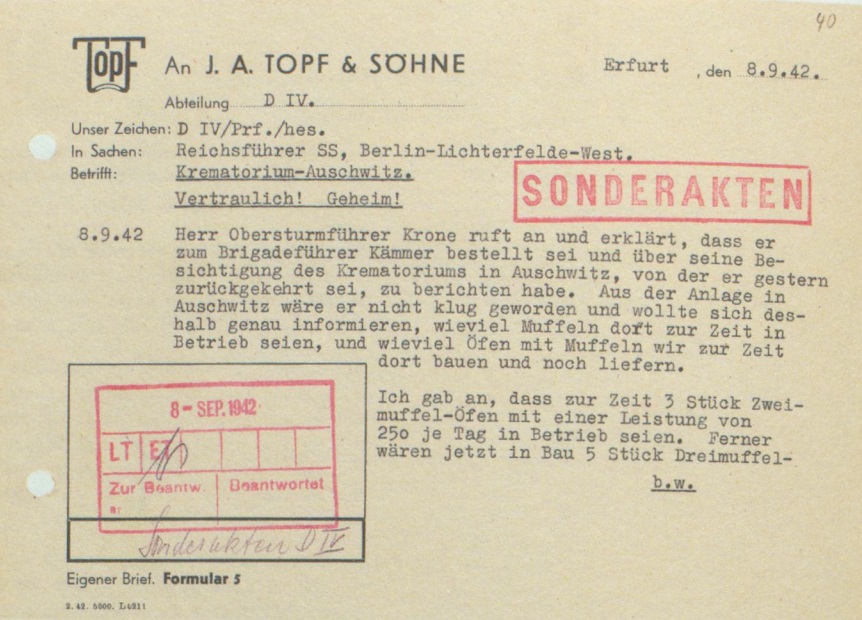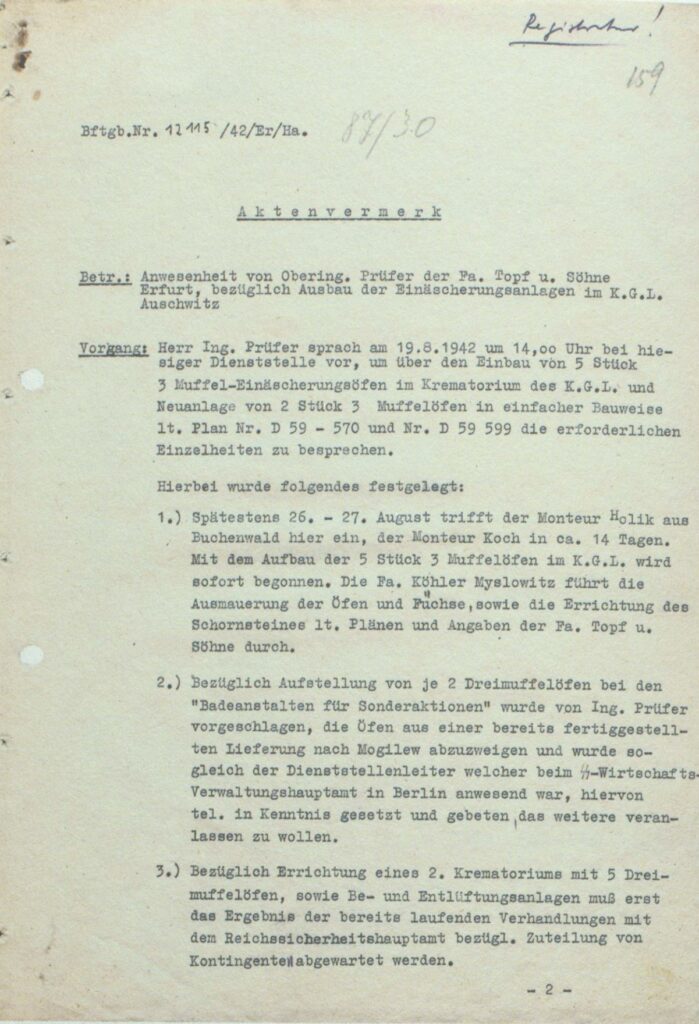1942-09-16 / Pohl’s September 1942 Report on the Auschwitz Expansion and the “Eastern Migration” of Able-Bodied Jews
On September 16, 1942, SS-Obergruppenführer Oswald Pohl, head of the SS Economic and Administrative Main Office, sent a letter to Heinrich Himmler summarizing a recent meeting with Albert Speer, Reich Minister of Armaments and War Production. Among the topics discussed was the planned expansion of Auschwitz concentration camp and its role to supply the armaments industry with Jewish forced labor. Pohl reported that Auschwitz was to be enlarged to accommodate up to 132,000 prisoners and that “the labor force available in concentration camps must now be used for large-scale armaments tasks.” He explained that the primary source of this labor would be Jews drawn from deportation transports to Auschwitz: “Able-bodied Jews designated for eastern migration will have to interrupt their journey and perform armaments labor.” Pohl also stressed that the deployment of Jewish laborers already cleared of Jews “must under no circumstances take place.” The already sealed fate of Jews deemed unfit for labor was not addressed in the official discussion.
